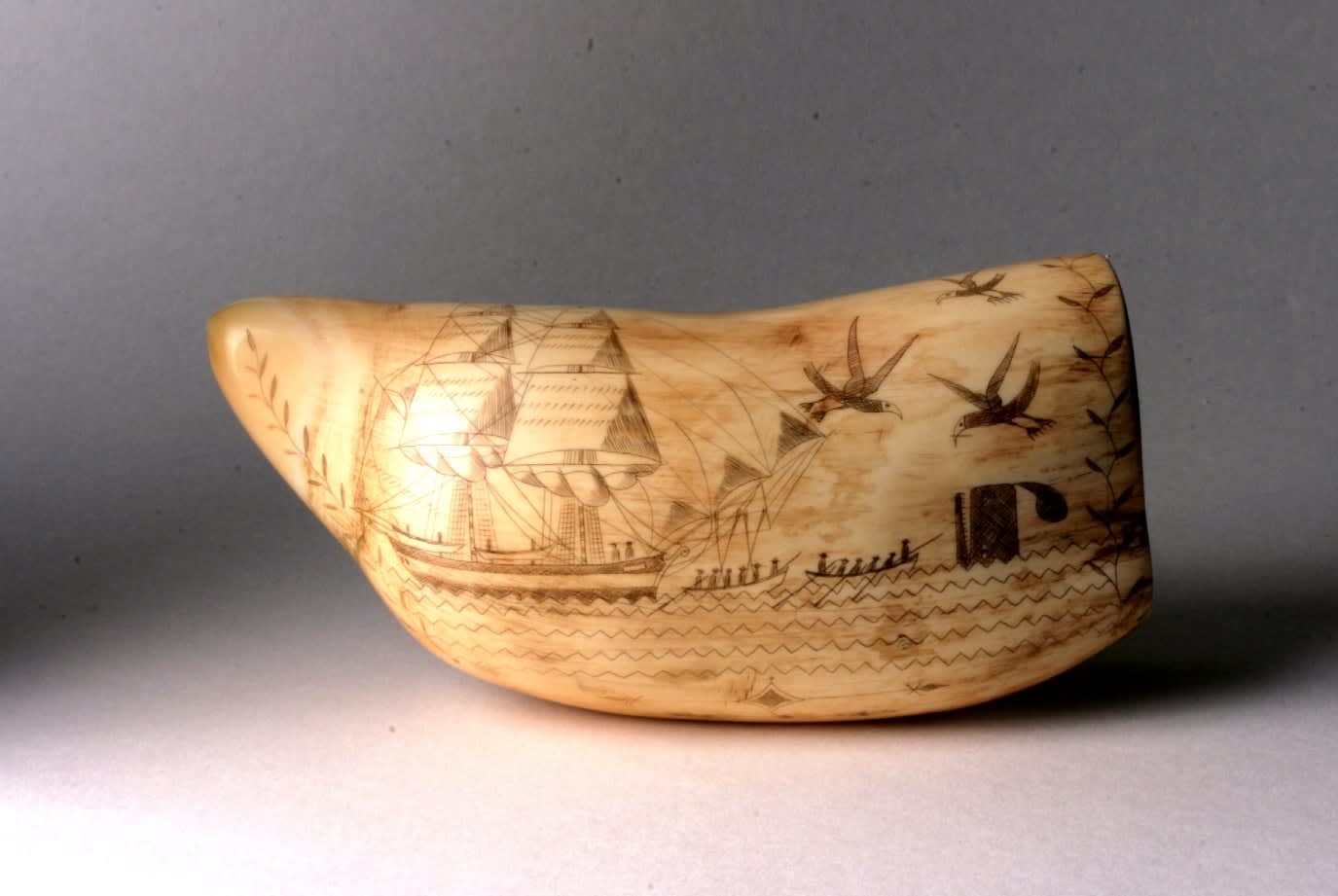Scrimshaw ivory, 19th Century CE
Ivory
2.75 x 5.3
kg.4
This piece is a finely manufactured Scrimshaw. Scrimshaw is the name given to scrollwork, engravings, and carvings done in bone or ivory. Typically it refers to the handiwork created by...
This piece is a finely manufactured Scrimshaw. Scrimshaw is the name given to scrollwork, engravings, and carvings done in bone or ivory. Typically it refers to the handiwork created by whalers made from the byproducts of harvesting marine mammals. It is most commonly made out of the bones and teeth of sperm whales, the baleen of other whales, and the tusks of walruses. It takes the form of elaborate engravings in the form of pictures and lettering on the surface of the bone or tooth, with the engraving highlighted using a pigment, or, less often, small sculptures made from the same material. However the latter really fall into the categories of ivory carving, for all carved teeth and tusks, or bone carving. The making of scrimshaw began on whaling ships between 1745 to 1759 on the Pacific Ocean, and survived until the ban on commercial whaling. The practice survives as a hobby and as a trade for commercial artisans. On one of the two sides of the scrimshaw is depicted a marine scene featuring as a central element an exquisitely carved tall ship, executed by the most complex level of miniature. On the other half of the object an erotic scene, depicting two lovers bound into an embrace of love. The anatomical details and the shading effects employed in this erotic scene show a remarkable level of virtuosity.
